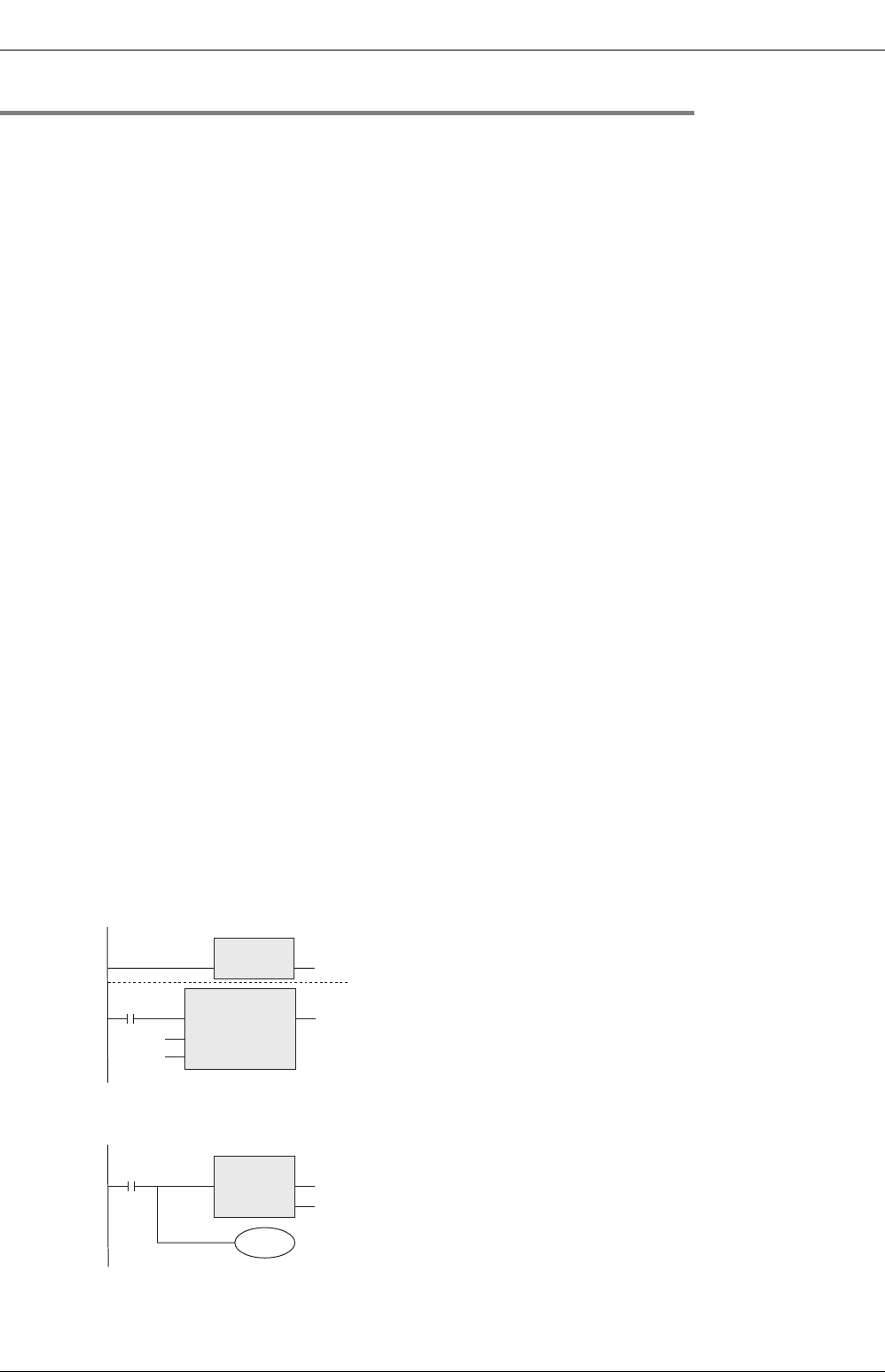
35 Interrupt Function and Pulse Catch Function
796
FXCPU Structured Programming Manual
[Basic & Applied Instruction]
35.2 Common items
35.2.4 Cautions on use (common)
This section explains common cautions on using the interrupt function or pulse catch function.
Specific cautions on each interrupt function are explained in the description of each interrupt function.
1. Processing when many interrupts are generated
When many interrupts are generated in turn, priority is given to the first one. When many interrupts are
generated at the same time, priority is given to the one having the smallest pointer number.
While an interrupt routine is being executed, other interrupts are disabled.
2. When double interrupt (interrupt during another interrupt) is required [interrupt function]
Usually, interrupts are disabled in an interrupt routine (program). When EI and DI instructions are
programmed in an interrupt routine, up to two interrupts can be accepted.
The FX
1S, FX1N, FX1NC, FX3S, FX3G or FX3GC PLC does not support this function.
3. Operation when a timer is used [interrupt function]
Note that counting using a general timer is disabled, even a 1 ms retentive type timer.
In an interrupt routine, use timers for routine program T192 to T199
*1
.
*1. The FX
0S, FX0, FX0N, FX1S, FX1N, FX1NC, FX3S or FX3G PLC does not support the timers for routine
programs.
4. Non-overlap of input [input interrupt (with or without delay function) and pulse catch
function]
The inputs X000 to X007 can be used for high speed counters, input interrupts, pulse catch, SPD, ZRN,
DSZR and DVIT instructions and for general purpose inputs. Make sure that input terminals do not overlap
with each other.
5. Operation of devices latched in the ON status [interrupt function]
Devices which were set to ON in an interrupt routine are held in the ON status even after the interrupt routine
is finished. When RST instruction for a timer or counter is executed, the reset status of the timer or counter is
also held.
To turn OFF a device held in the ON status or for canceling such a timer or counter held in the reset status,
reset such a device or deactivate RST instruction respectively inside or outside routine.
Example in which outputs are latched
In the program example shown below, the counter C0 is provided to count X001. When X000 turns ON from
OFF, the interrupt program I001 is executed only in one scan, and then the counter C0 is reset and Y007 is
output.
1) Program example
EI
EN ENO
OUT_C
EN ENO
CCoil
CValue
RST
EN ENO
d
M8000
Y007
CC0
K10
CC0
X001
[Main program]
[Interrupt program]
(Event: I001)


















